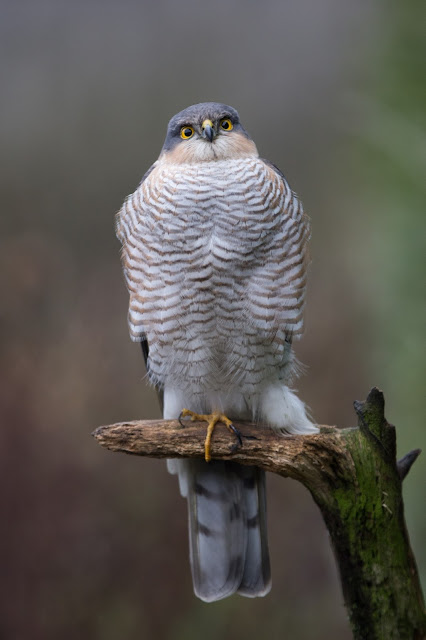Unlike our eyes, which are spherical and can move in their sockets, birds' eyes are flattened front to back and can't be moved around. To change their field of view birds move their heads instead. Birds of prey have forward facing eyes to give excellent binocular vision and can turn nearly 180° either way.
The range of neck movements as it watches potential prey is extraordinary. I read that it has 14 neck vertebrae (compared with our seven) to give it such flexibility.
Quite why it turns its head over sideways when looking at me straight ahead I don't know. I think owls do this as well, apparently when looking at something interesting or puzzling.
Birds don't blink as we do but have a third eyelid, the nictitating membrane, which wipes the eye sideways.
It can do this with each eye independently.
Birds close their eyes by moving the lower lid upwards - the upper lid doesn't move. Here it is closing its eyes to protect them while preening.
The iris adjusts to control the light entering the eye. If the bird looks towards the sky the iris constricts.
If it looks down to the darker ground the iris dilates.
This also works independently in the two eyes (unlike ours) - here the left eye is in brighter light and the iris is more constricted.
If you are a sparrow it is bad news to get this view of a sparrowhawk.


















Fascinating. Learned a lot from that. There's a need to study bird physiology and anatomy more! I noted Chris O'B comments re the respiratory system having read about it a few days ago. All very interesting!
ReplyDelete